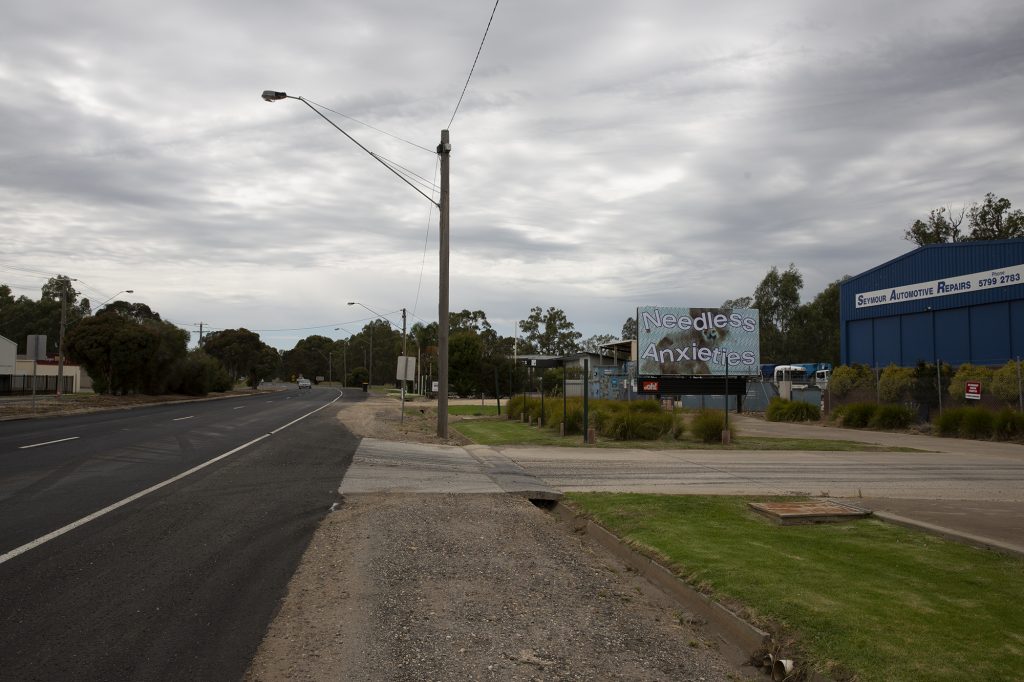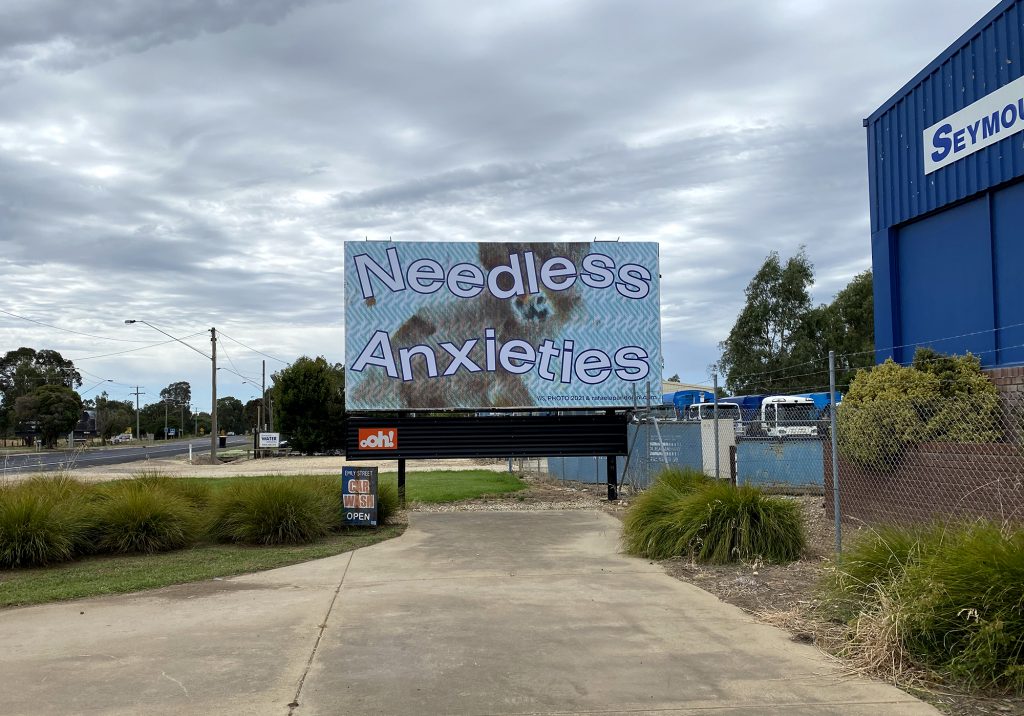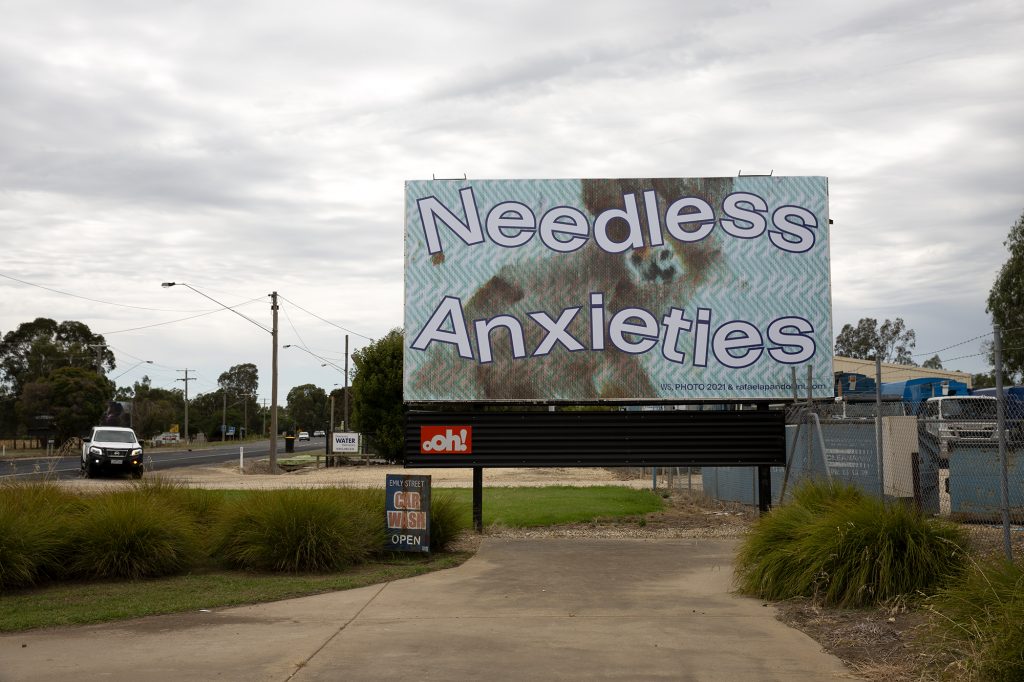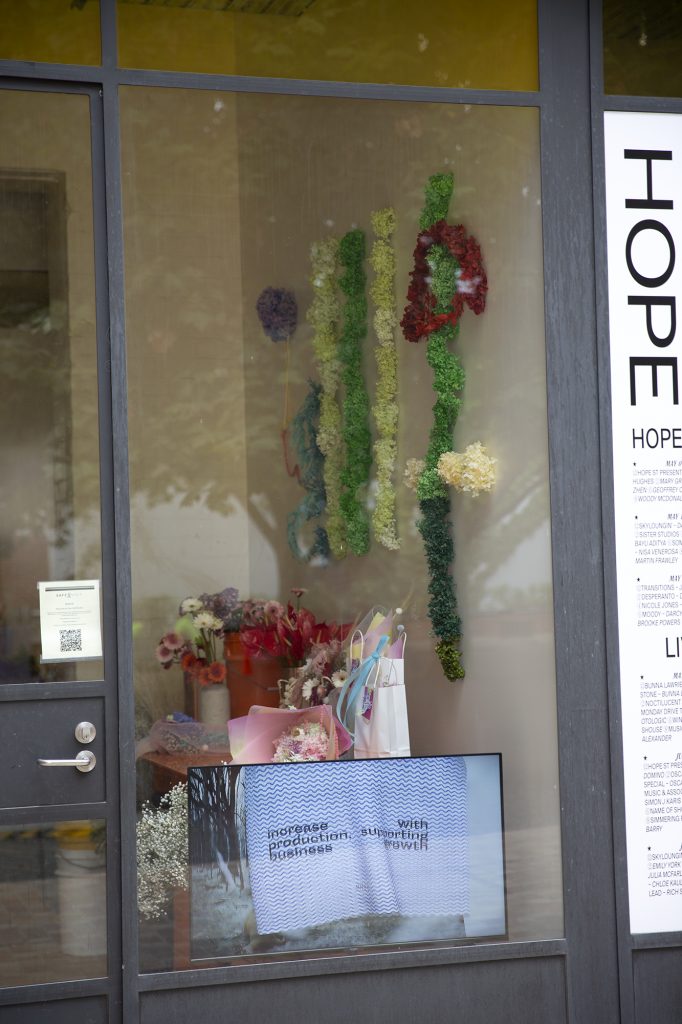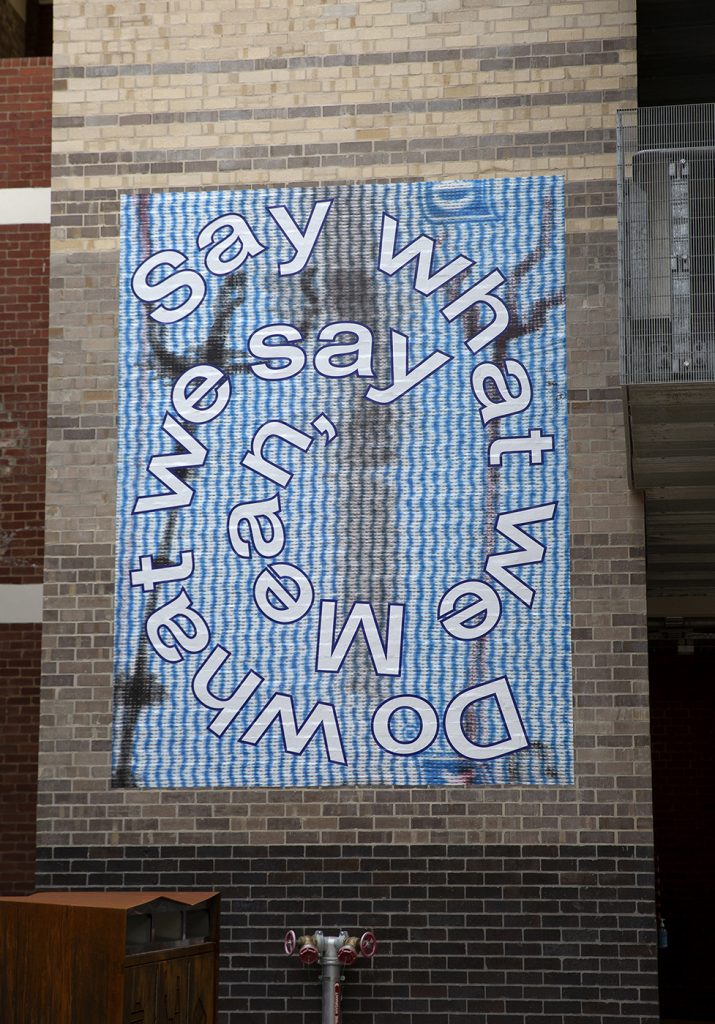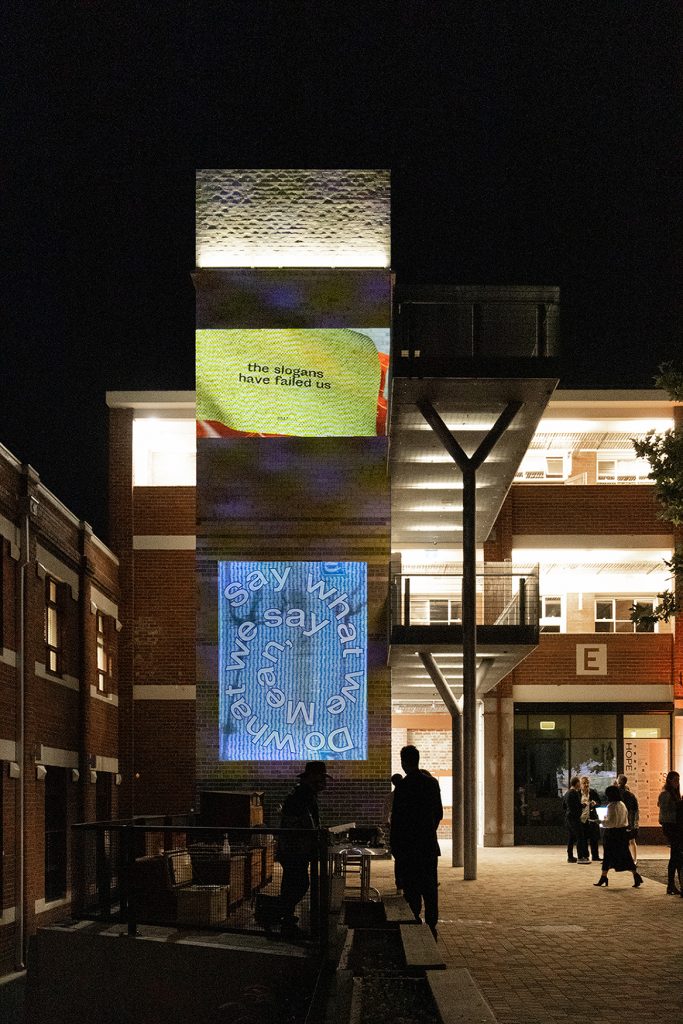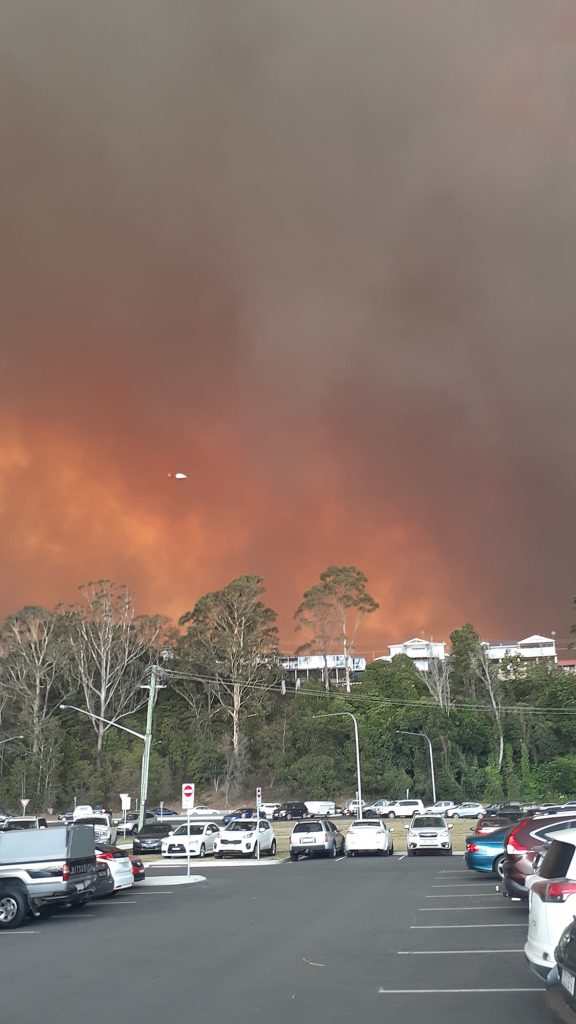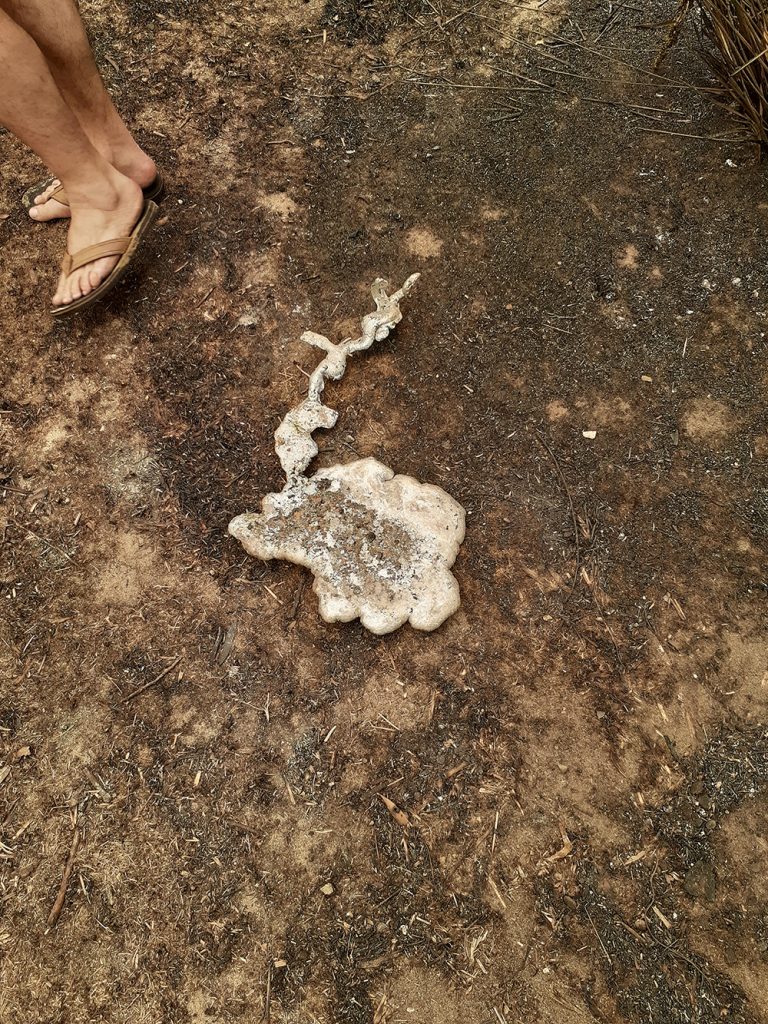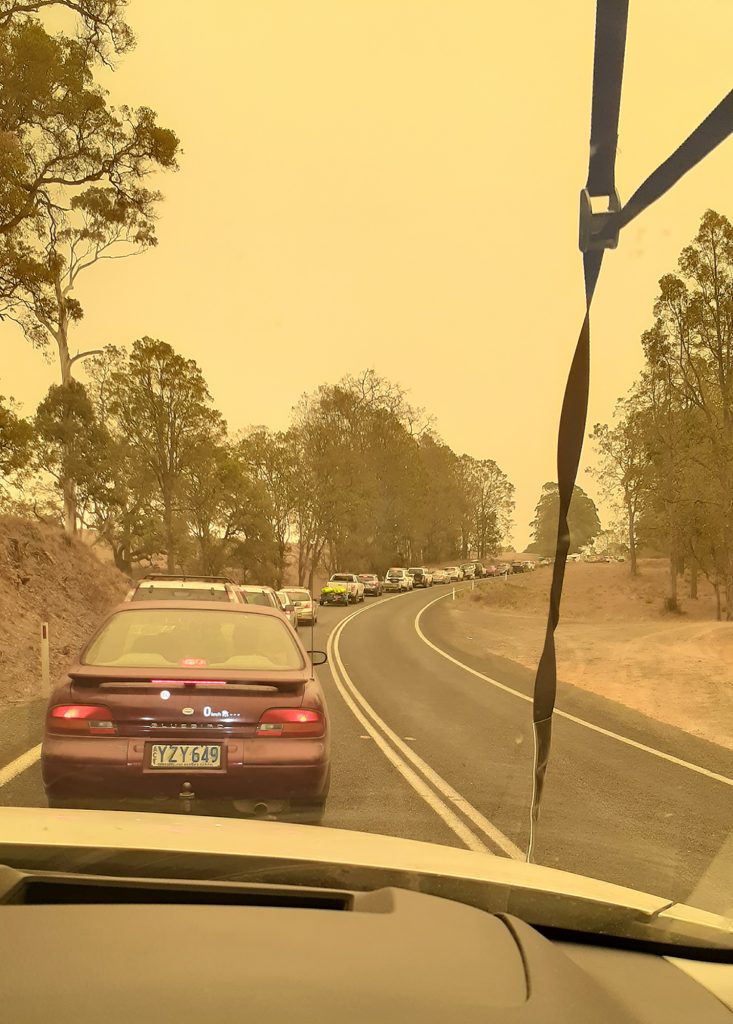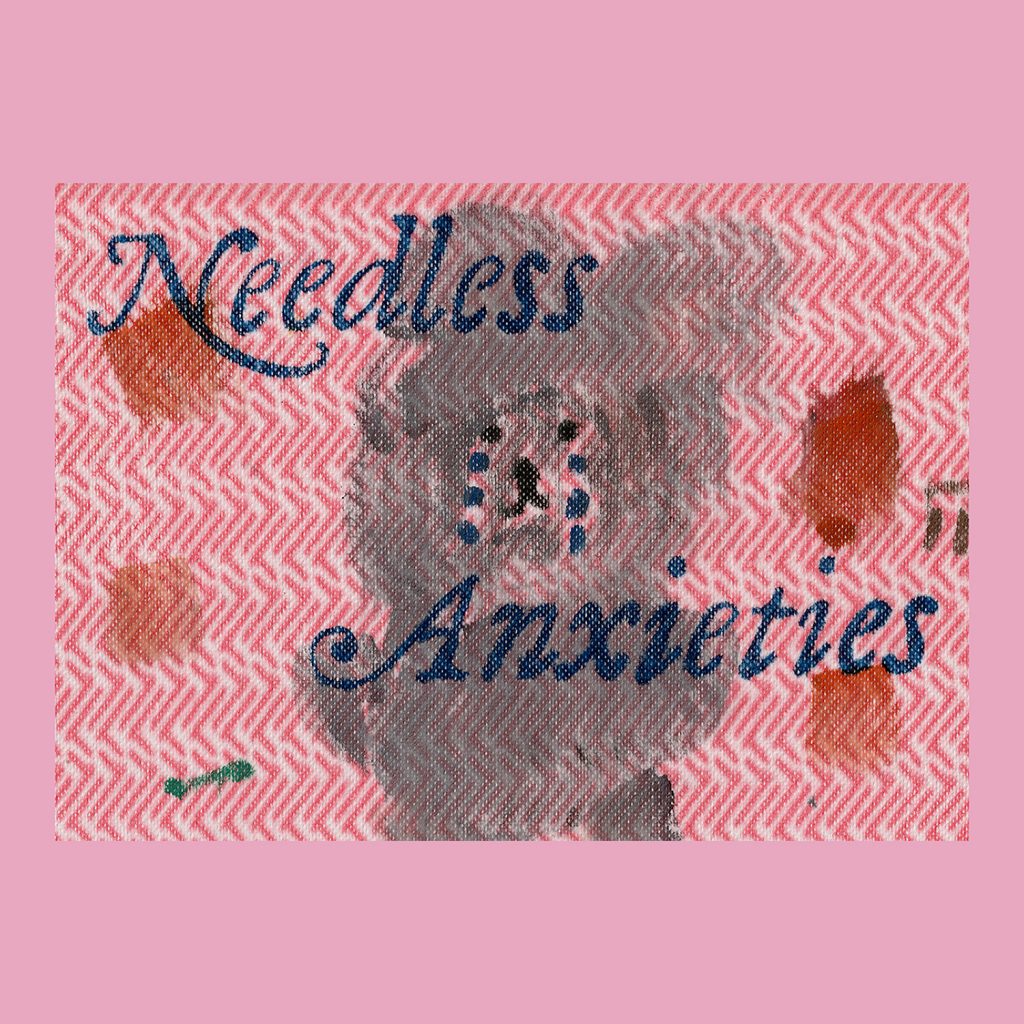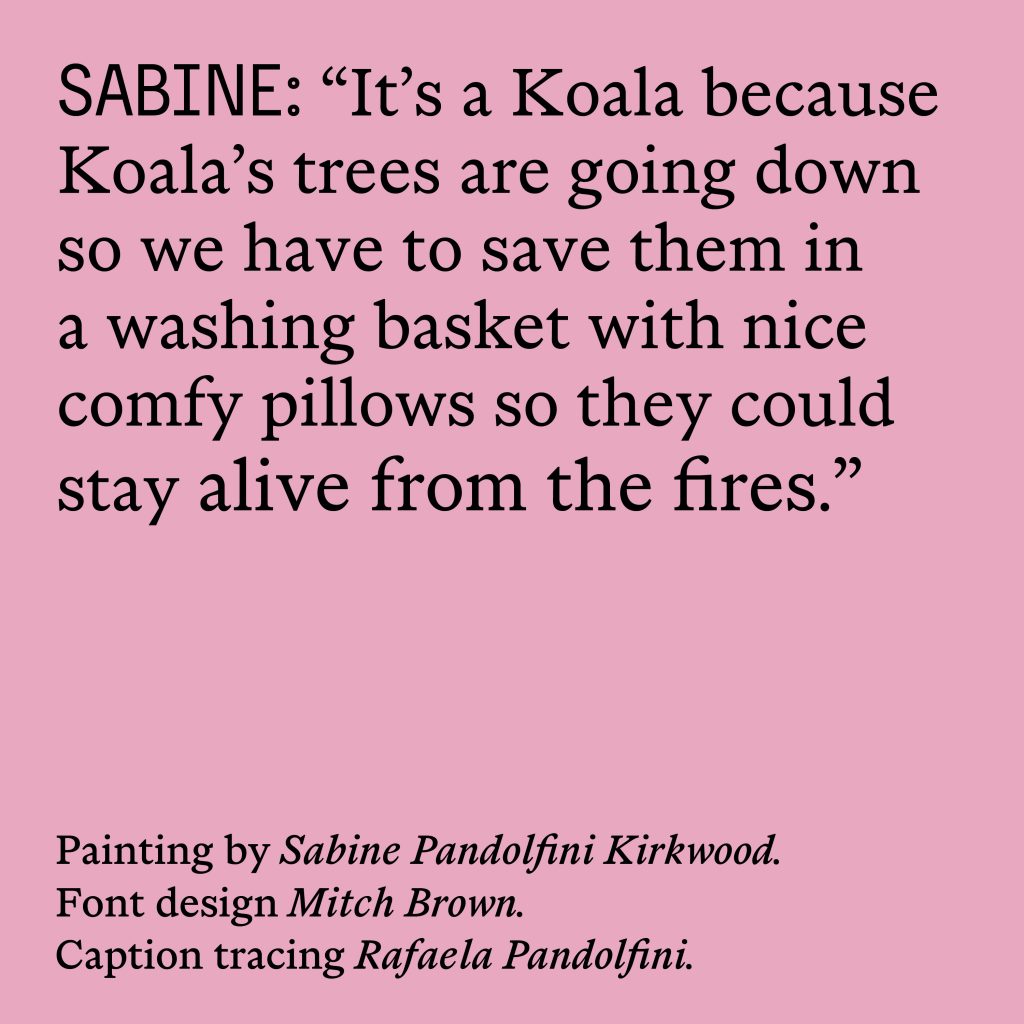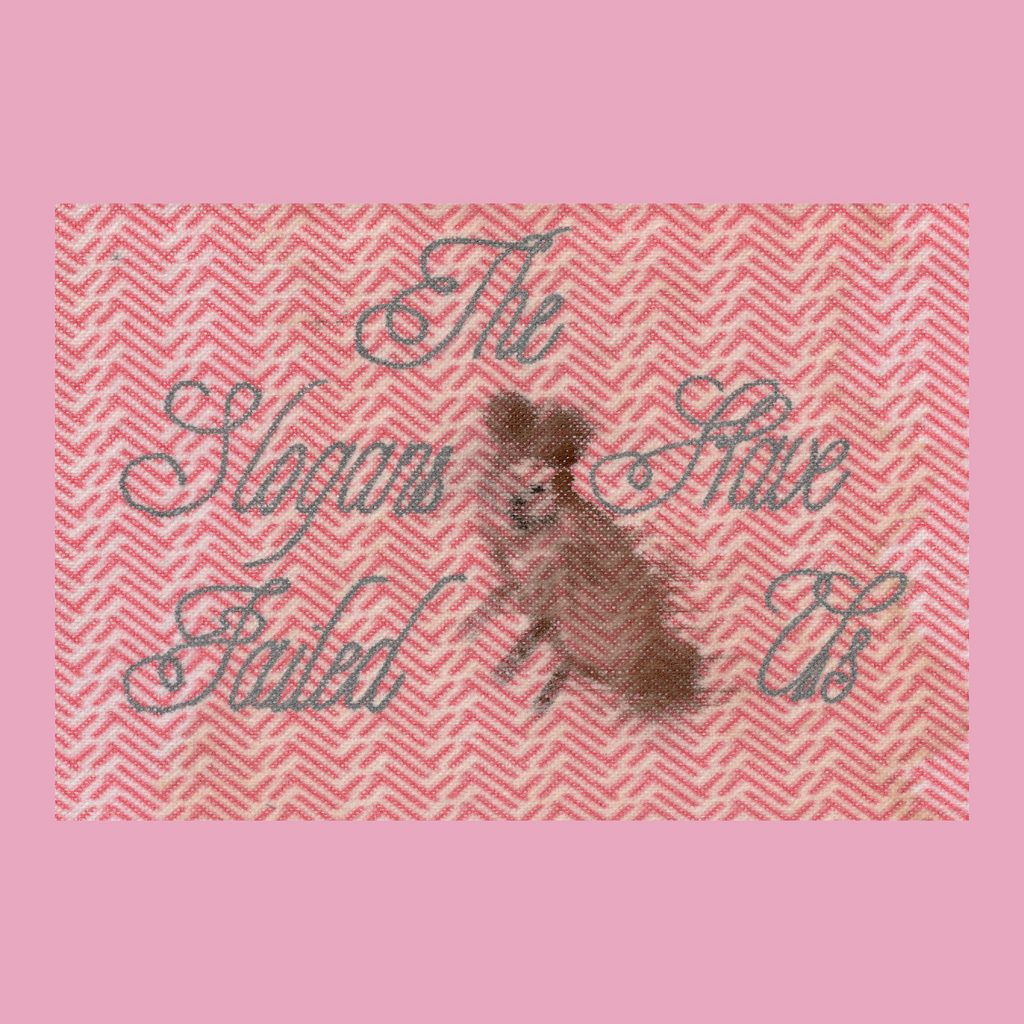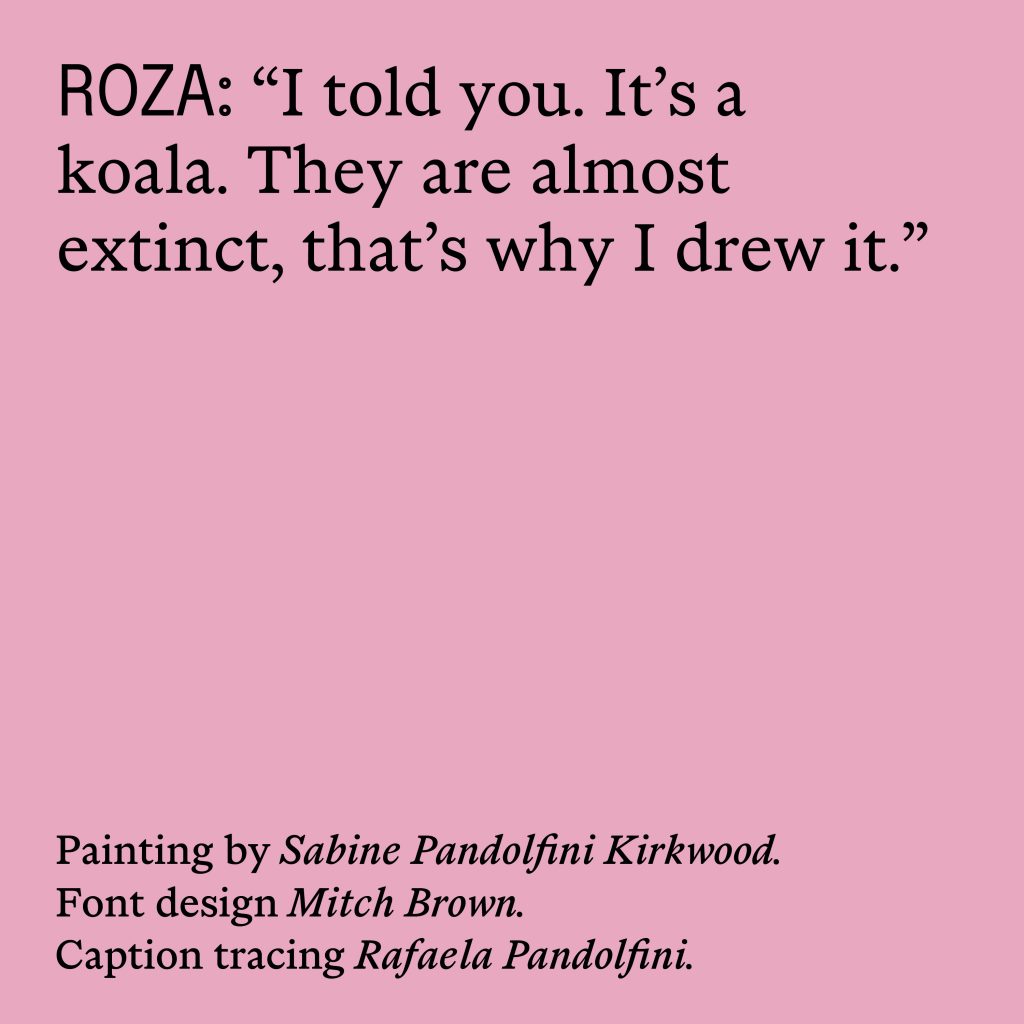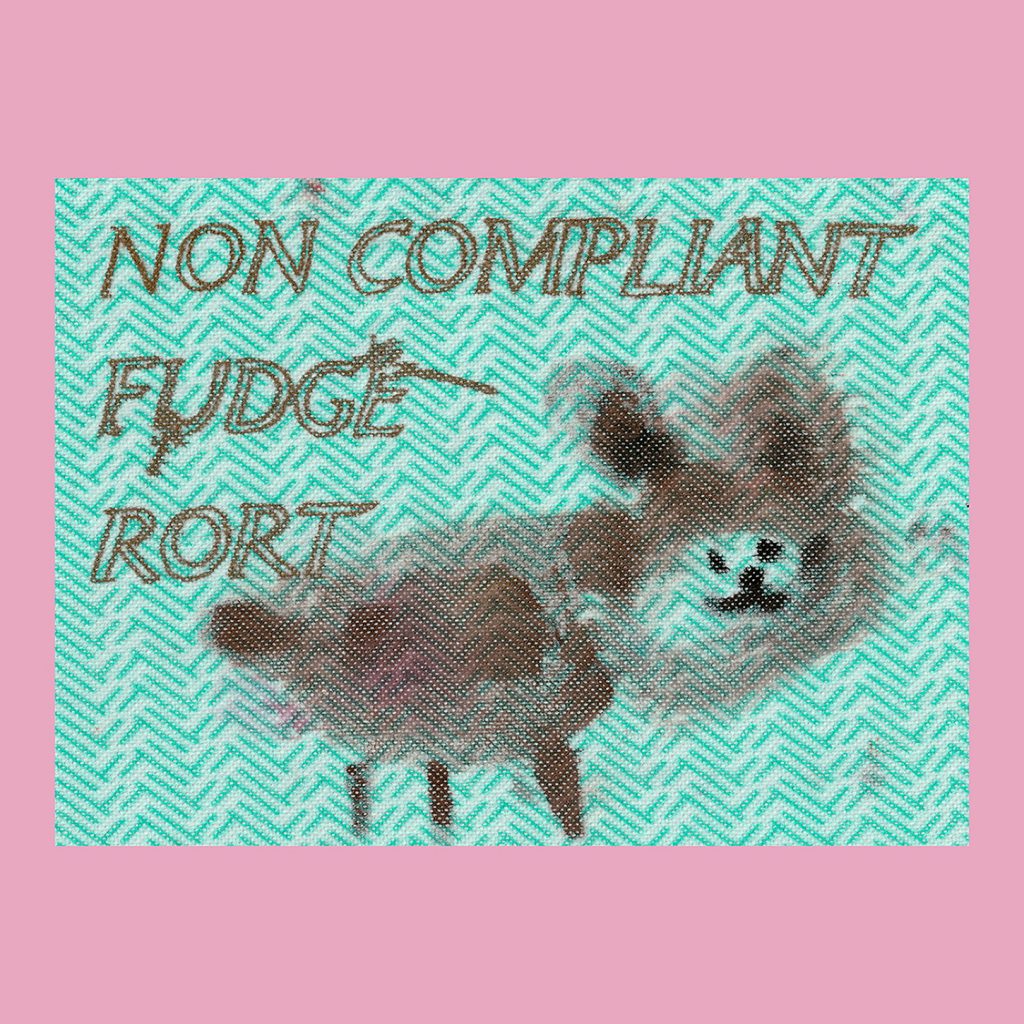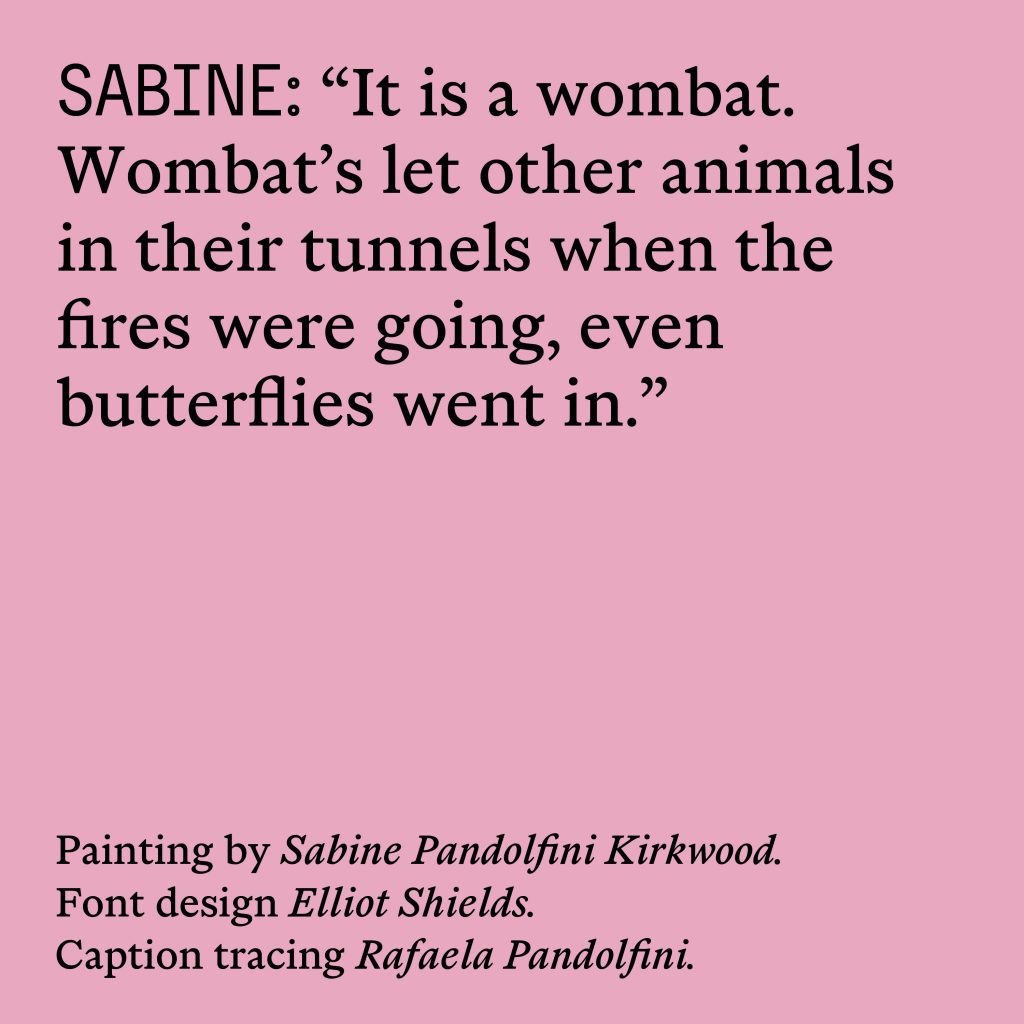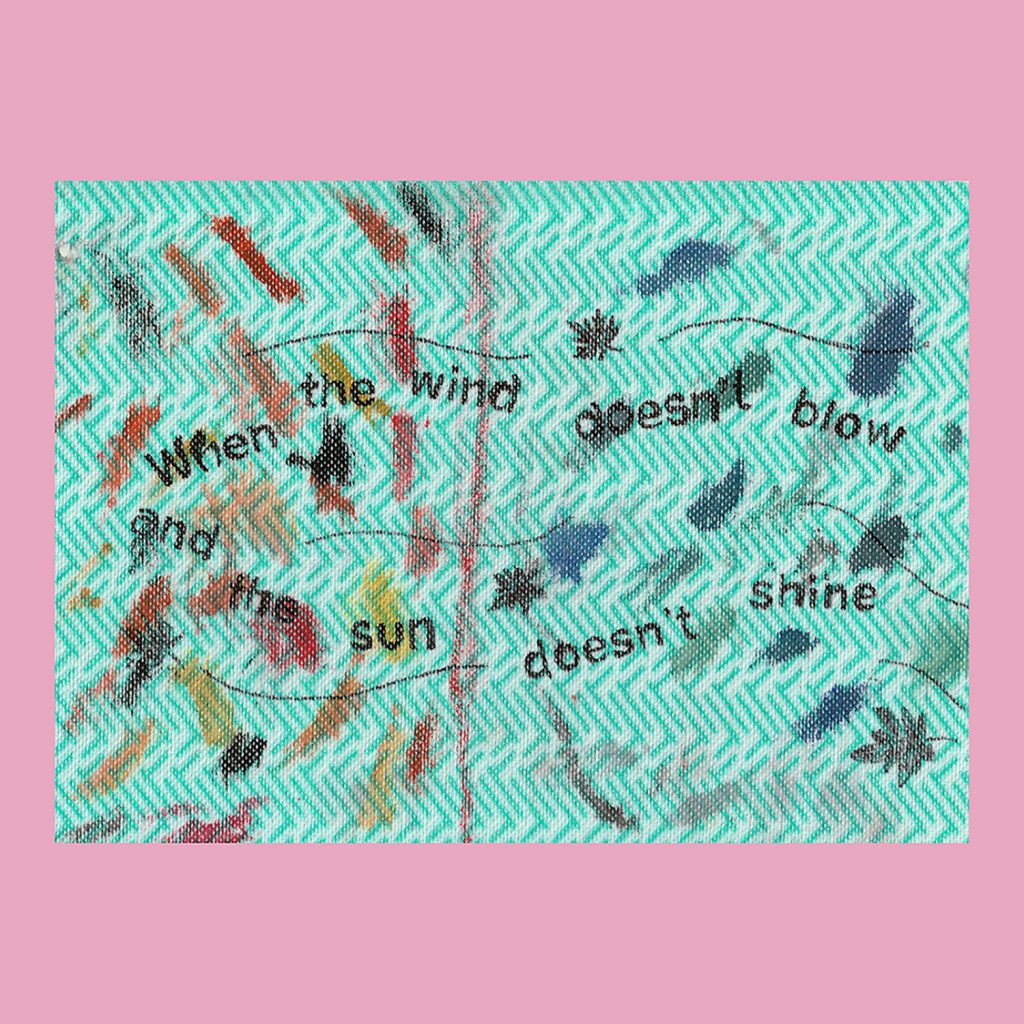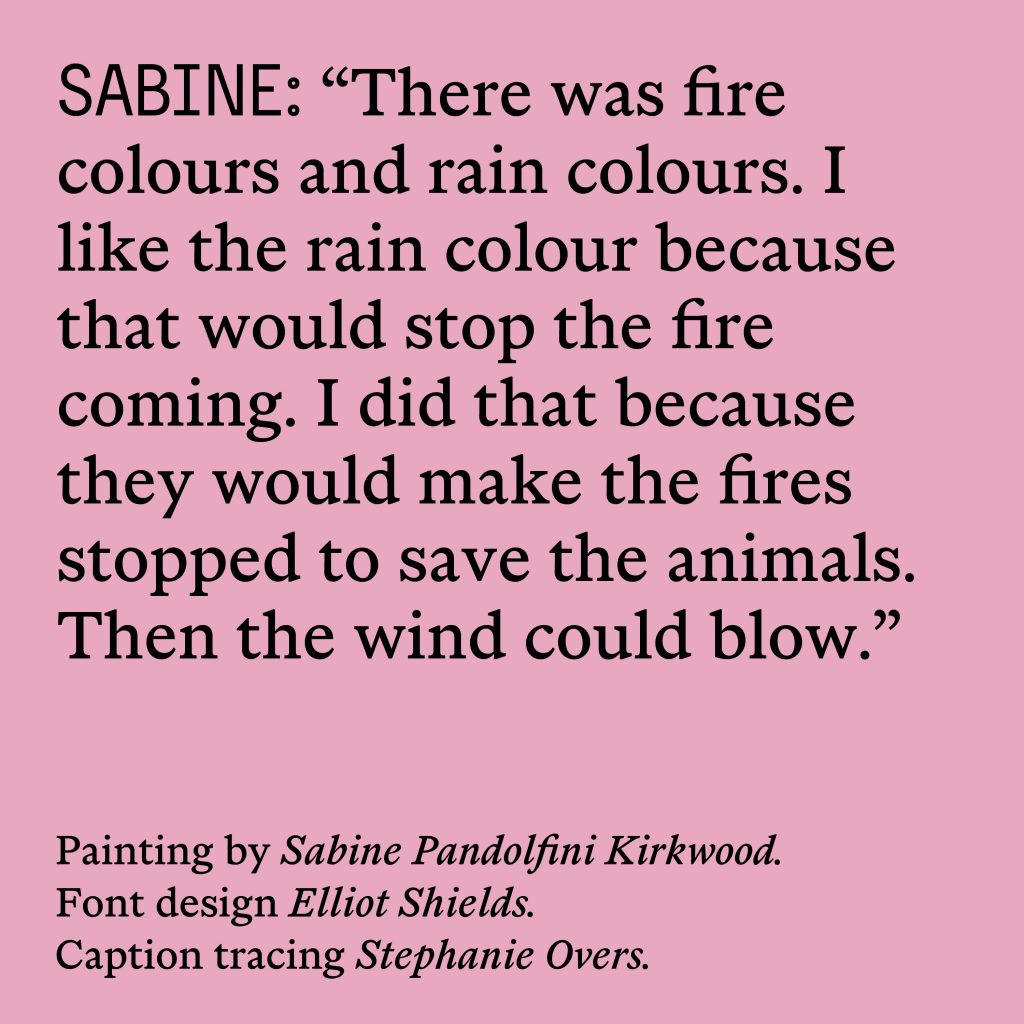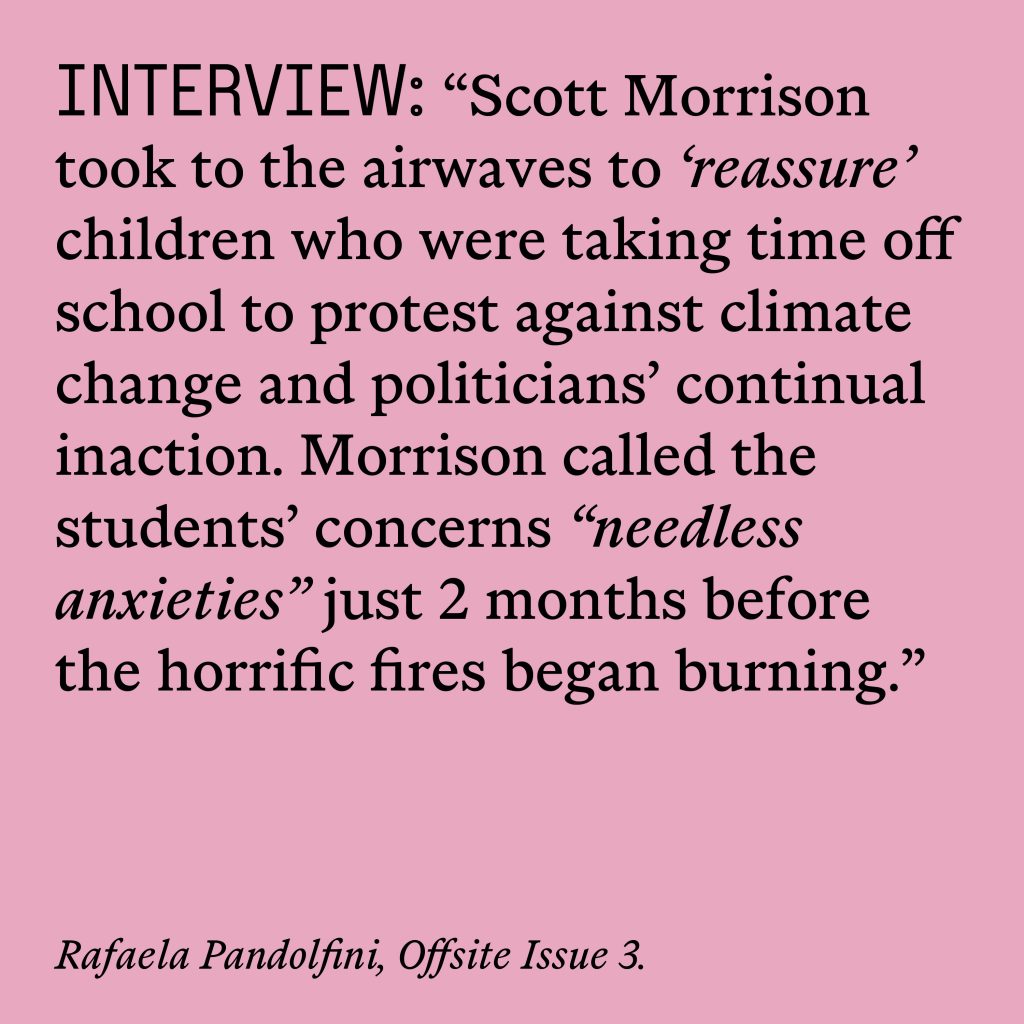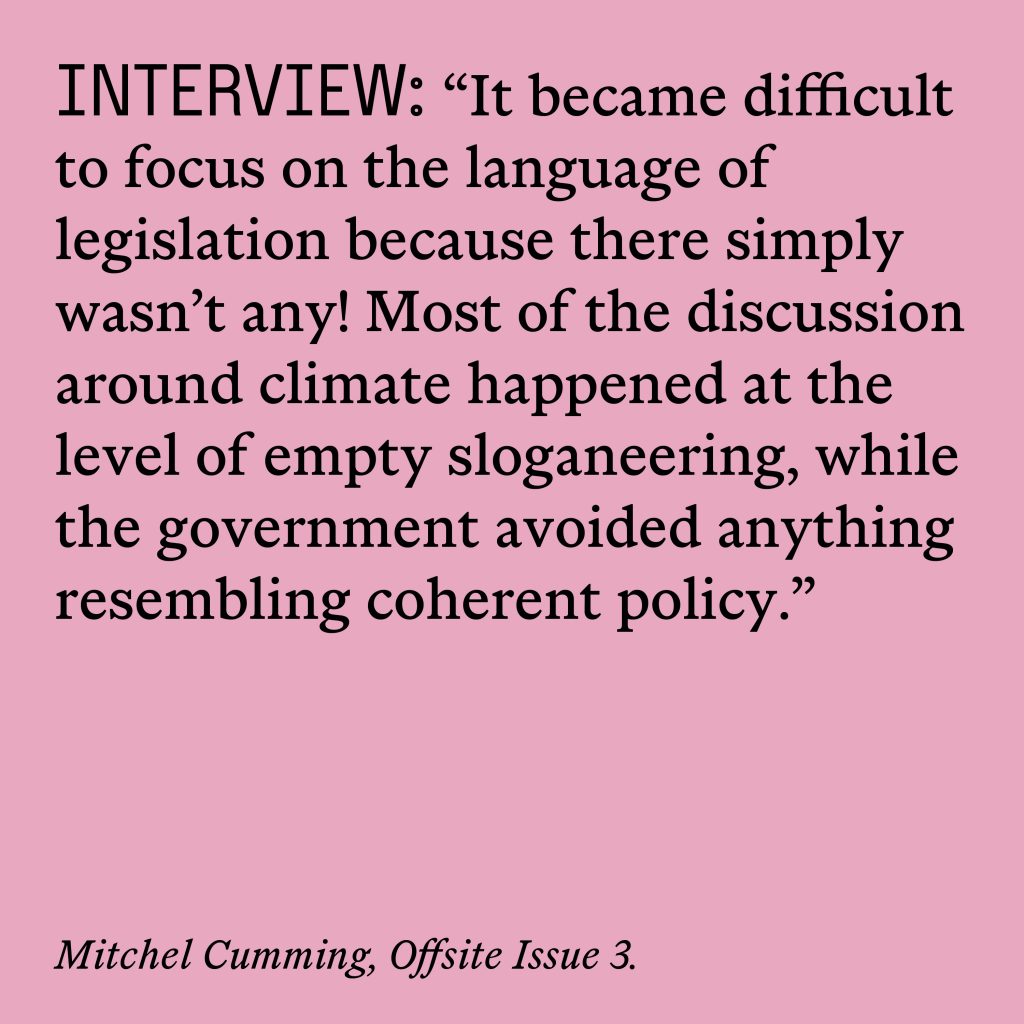Myths & Facts is an ongoing research project. In early 2021 the project took form as a processional series of nine images displayed on billboards along the Hume Highway in Eora, Wiradjuri, Taungurong and Woiworung countries, between New South Wales and Victoria.
Myths & Facts interrogates Australia's failure to address environmental violence at a policy level. Evasive phrases pertaining to the government's position on climate change have been transposed from the mouths of politicians onto chux cleaning cloths. Stripped of context, these empty phrases signal our government's disguise and deferral of the environmental emergencies we currently face. Rafaela's close-up photographs of the chux take on a forensic quality. On the absorbent fibres, the hand-painted lettering leaks, blurring with watercolour paintings and the stains of daily use. Intended to span the 878kms / 9 hour, 12 minute drive between Sydney and Melbourne, 7 music compilations by different contributors accompany the billboard works. This particular stretch of highway was dramatically impacted during the fire season when catastrophic weather conditions forced its closure.
https://offsite.westspace.org.au/work/myths-facts/
Amelia Wallin
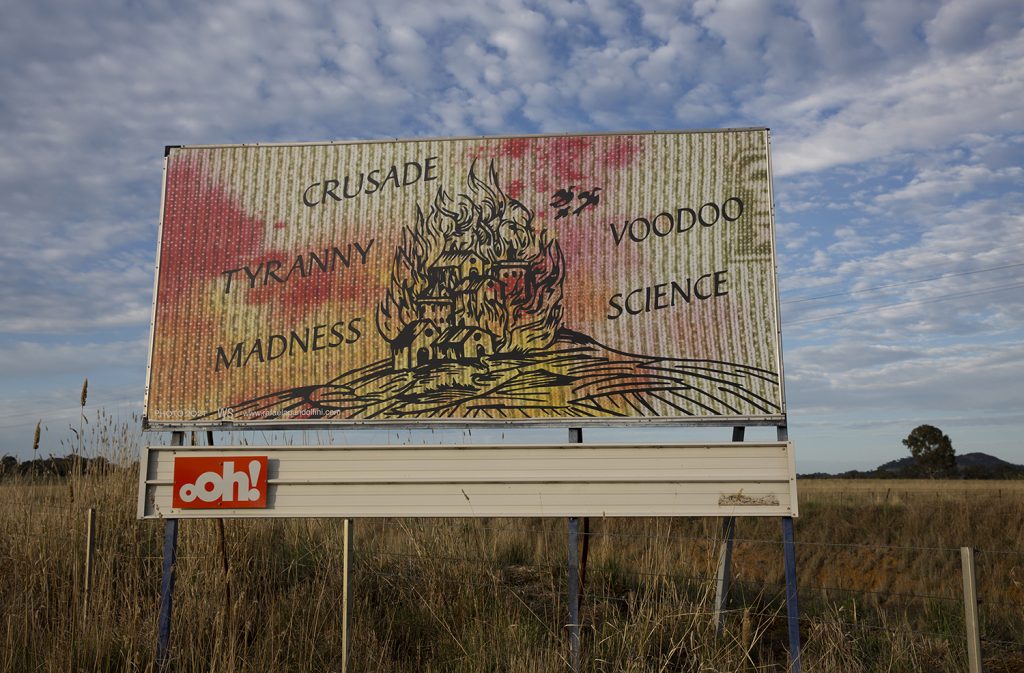
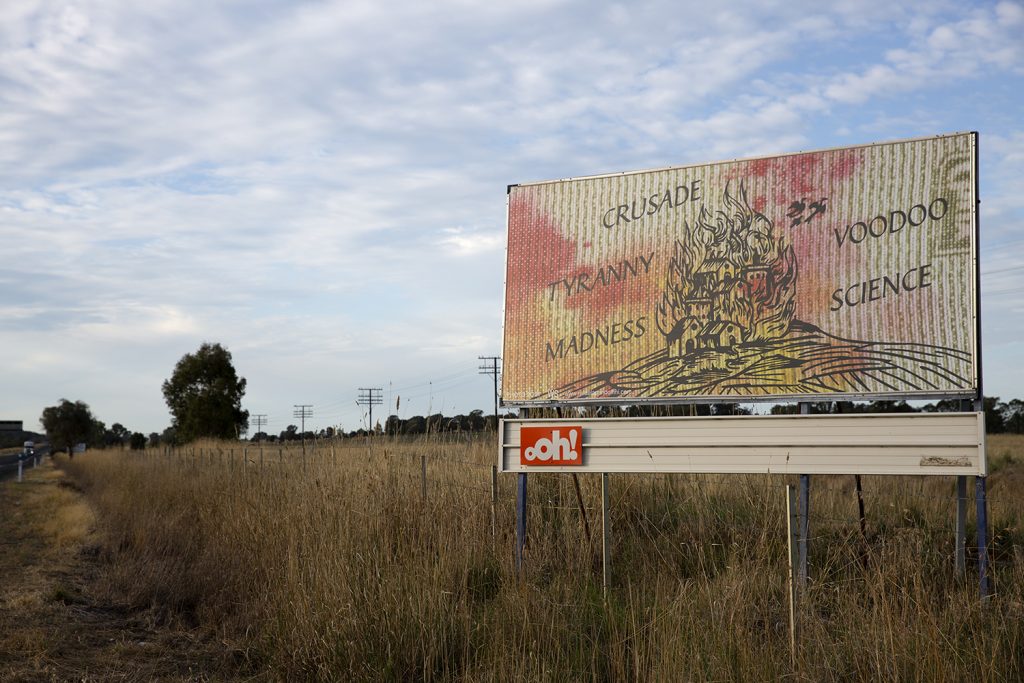
Hume Highway Southbound, Albury
Painting: Rafaela Pandolfini
Graphic: Elliot Shields
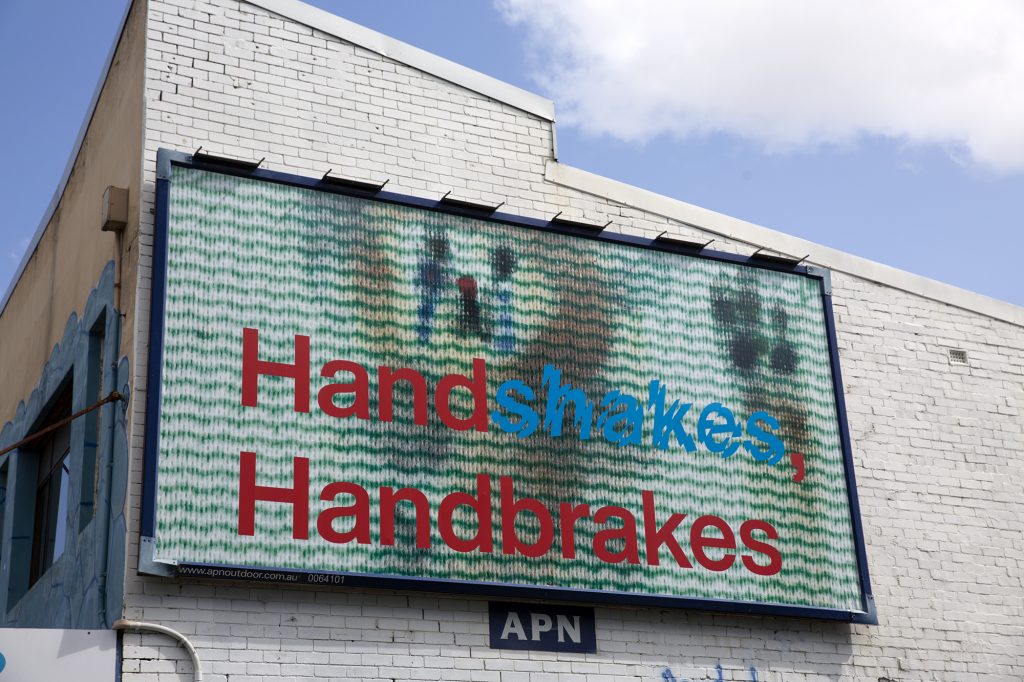
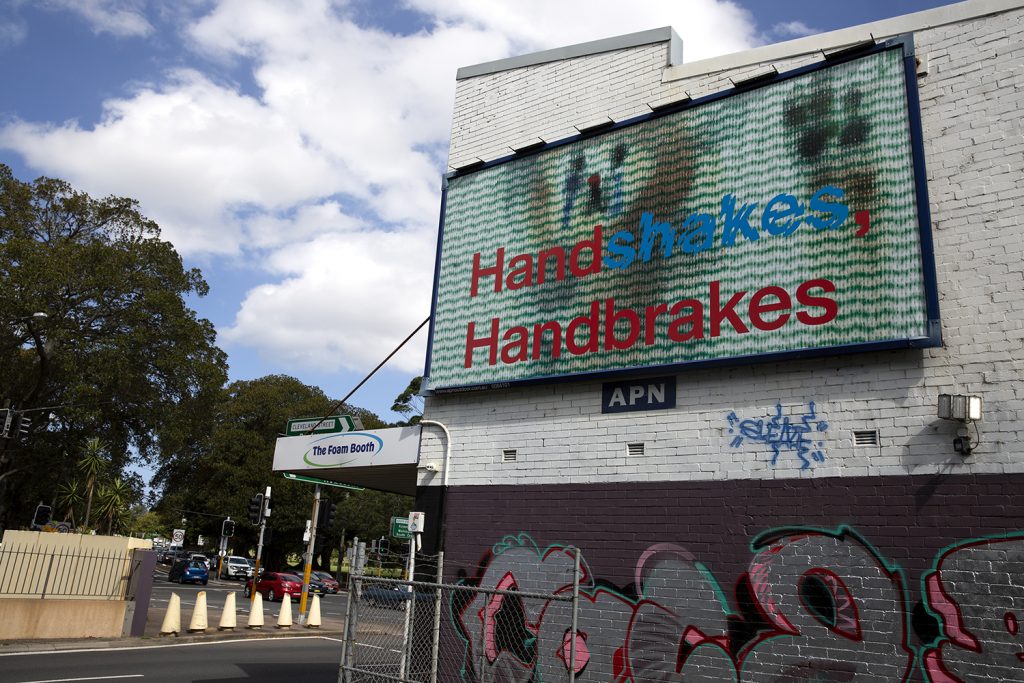
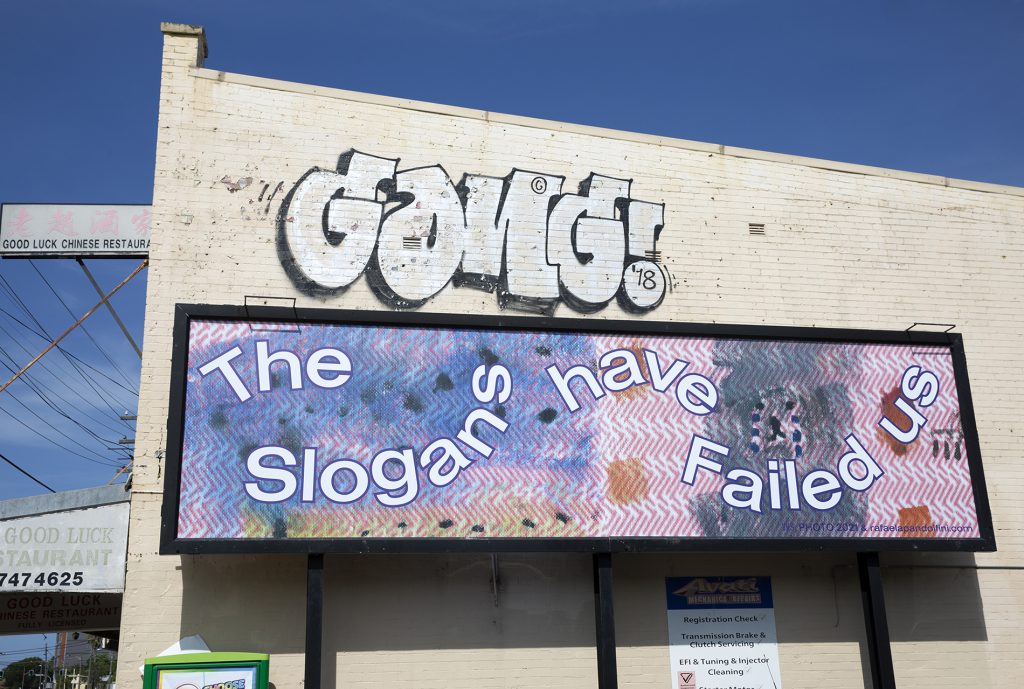
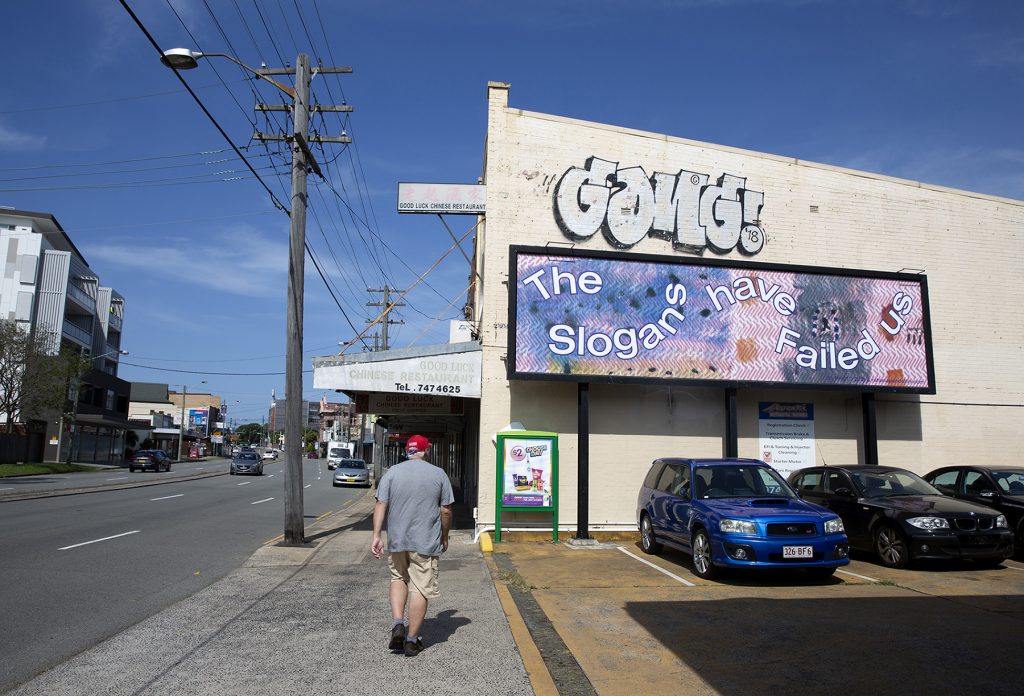
Hume Highway Eastbound, Enfield
Paintings: Rozsa Erica & Sabine Jean
Graphic: Robert Milne
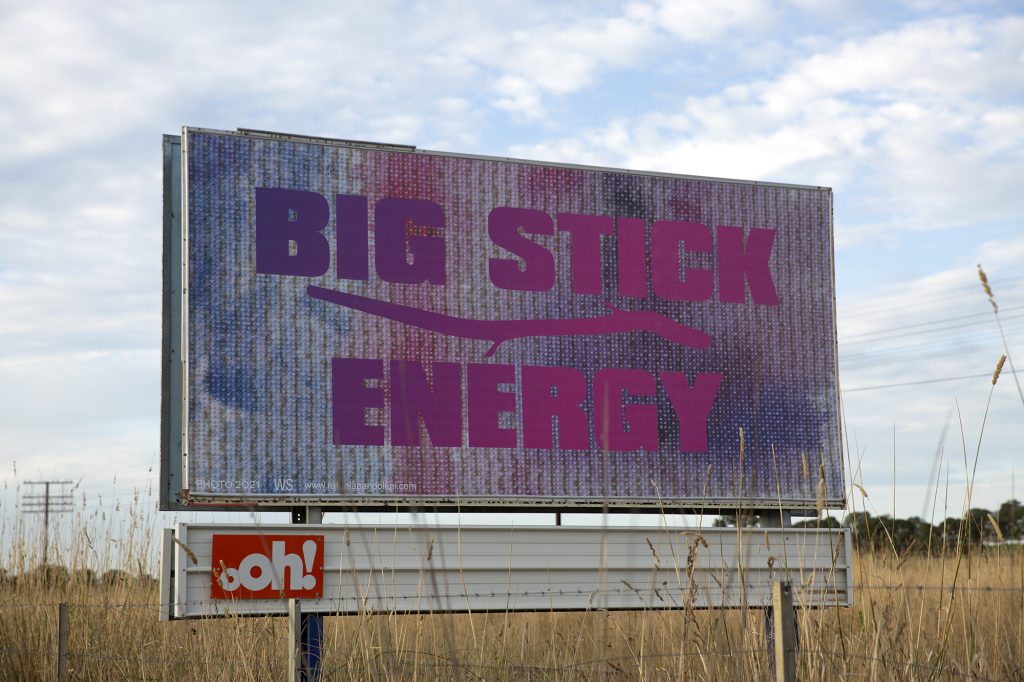
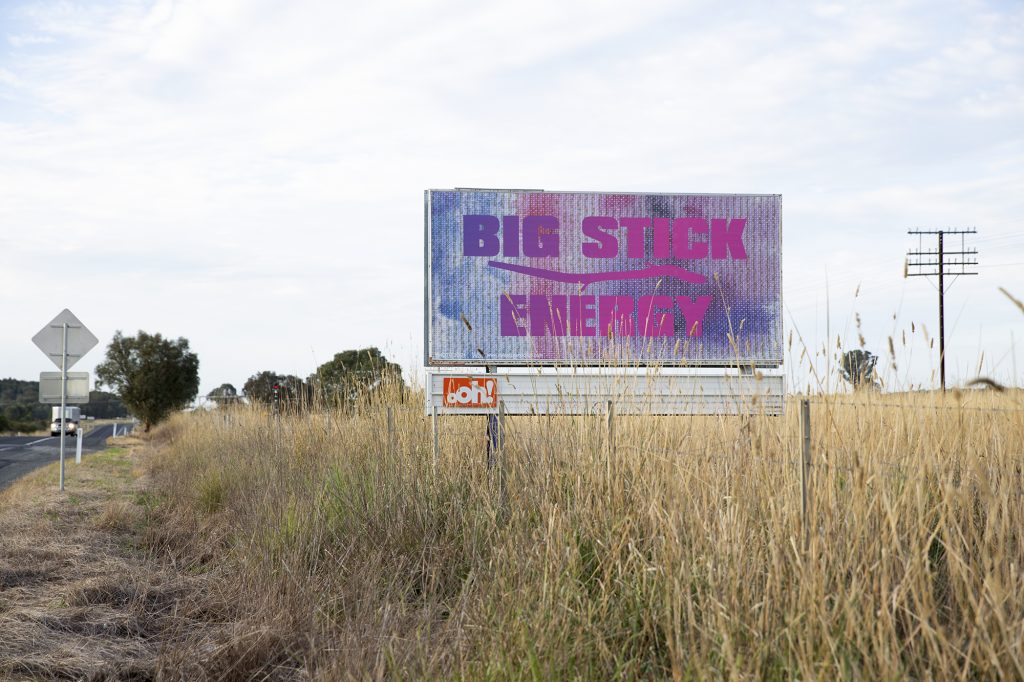
Hume Highway Southbound Gundagai North
Painting: Sabine Jean
Graphic: Elliot Shields
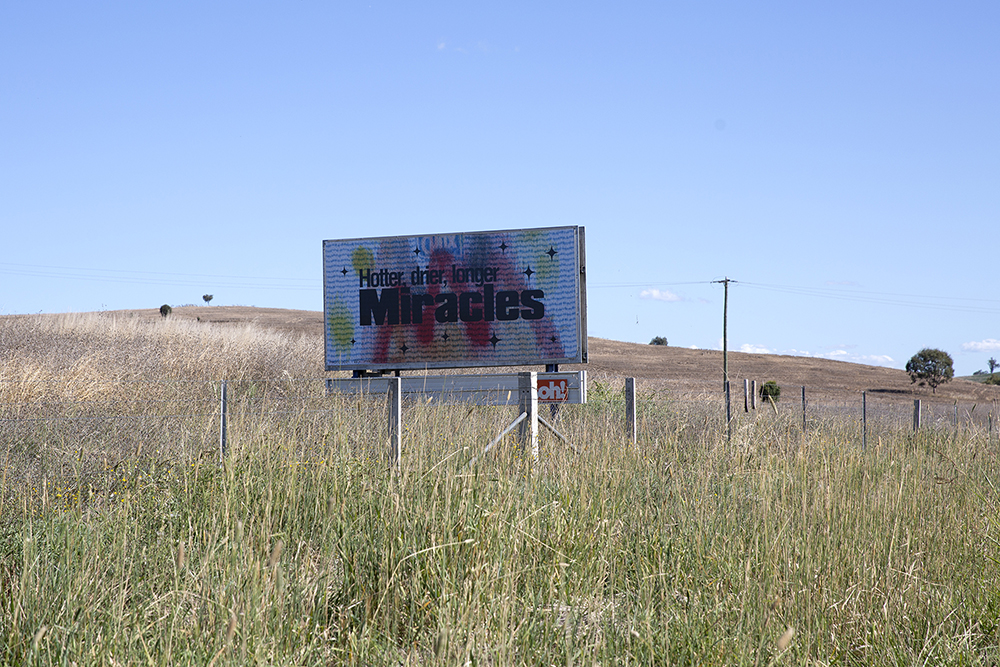
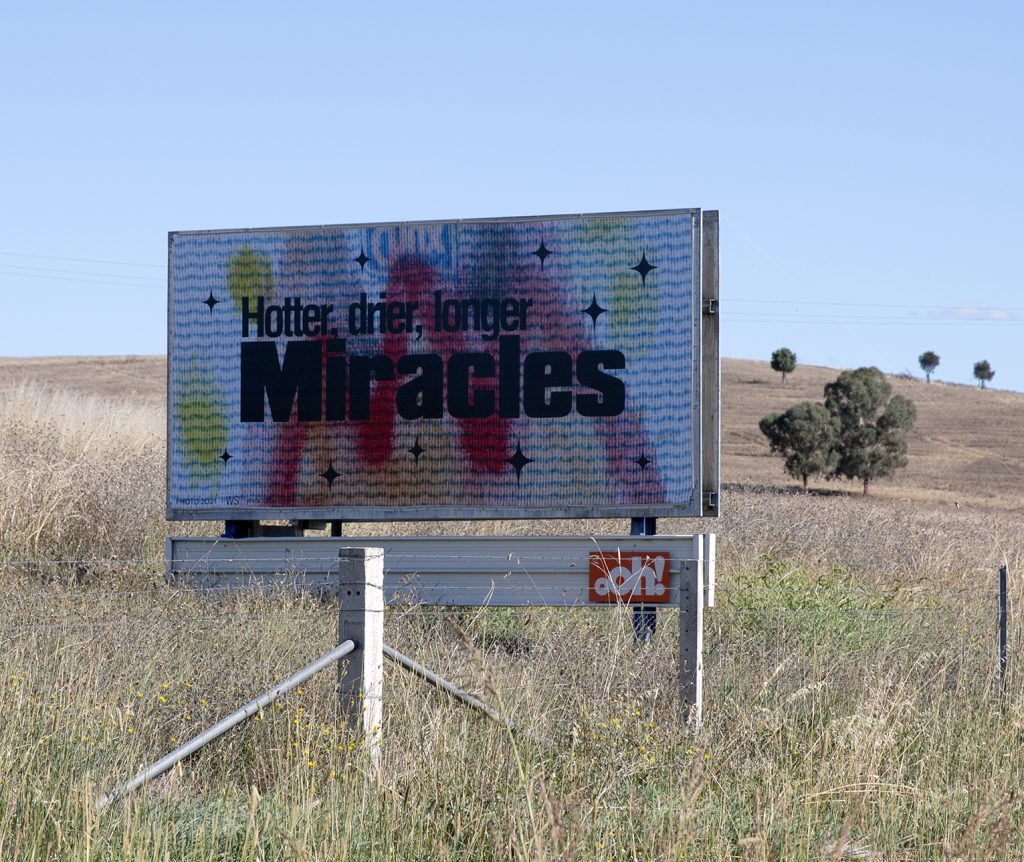
Hume Highway Southbound, Gundagai North (Coolac)
Painting Sabine Jean Pandolfini Kirkwood
Graphic Elliot Shields
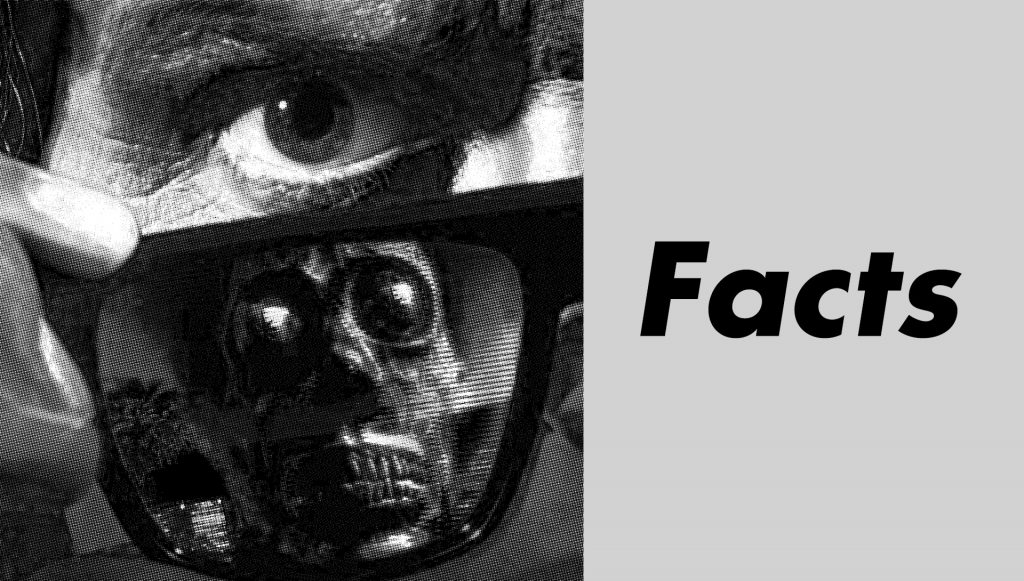
In the wake of Trumpism, there has been much written on the rise of right-wing populist politics and the deployment of so-called "anti-rhetoric" rhetorical techniques. The aim is to distance politicians from PR professionals, or professionalism more broadly, in order to champion the rhetorician in question as a "common man" and truth-sayer. But to "say what you mean, mean what you say," to posit that it is possible to be a "what you see is what you get" kinda guy, is a linguistic and logical impossibility. Not only because, after Baudrillard, we live in a world where reality is entirely constructed and so old economies of truth and representation are no longer possible 1 but also because words cannot say the whole truth. The words to do it are always saying something more or less than what they mean to say, or they are missing entirely. This is the foundation for Lacan's whole theory of language, where a symbolically constructed reality is inherently lacking and so is a source of alienation. Text does not contain meaning in and of itself, but rather takes on meaning by way of an unconscious system of repressed meanings.
Parataxis, the rhetorical and poetic technique of short sentences with clauses or phrases placed together with no direct grammatical or syntagmatic connection between them, is what gives a "slogan" it's "straightforward" connotations. The paradigmatic example of parataxis is Caesar's "Veni, vidi, vici," (I came, I saw, I conquered), but a more recent, closer to home, example is Tony Abbott's mantra on renewable energy: "When the wind doesn't blow and the sun doesn't shine, the power doesn't flow." The brevity and repetition of the layered "doesn't" statements imply a certainty and determination that build to a matter-of-fact, foredrawn conclusion: renewable energy doesn't work. Parataxis is found not only in political rhetoric, clickbait headlines and advertising but is also built into the very foundations of the micro-oratorical world of social media infographics, where ideas are confined to Twitter word limits and ten-swipe pastel graphic designs. As the dominant mode of online experience, we are inundated by intense whiplash-bursts of tightly managed mini constructions: the compartmentalisation of daily life into separate, autonomous self-justified "facts."2
There is an important distinction to be made between memes and infographics. Where memes are defined by "recombinatory circulation" - a polyvocal palimpsest that sees the form remain fixed, while the content continually shifts through endless derivations - the content of infographics remain fixed, speaking from a single, supposedly coherent point of view. As they circulate, each infographic is faithfully replicated, appearing unchanged on different well-intentioned profiles. Classical views of communication and propaganda devised in the age of television have overemphasized both as vertical processes (from a mass communication form to the masses who receive and consume it), but the age of social media has revealed the flaws of such models. We are all propagandists and spreading misleading, manipulative or falsely "coherent" messages and to do so simply to point out their absurdity is still to spread or share them, to give them traction or virality. It does not feel like a coincidence that the portmanteau "infodemic" was coined in 2003 specifically with reference to SARS, before its most recent proliferation in the wake of COVID-19. Ideology spreads like a virus, between subjects, rather than through the covert administration of the Minister of the Interior's Ludovico technique in A Clockwork Orange.
Responding to some of his pupil's criticisms, in Seminar XI, Lacan quips: "now, that is precisely what I mean, and say - for what I mean, I say."3 The claim, as Zizek wrote some time later in The Sublime Object of Ideology, that there is a coincidence between what we intended to say and what we are effectively saying is one that defines the illusion of the Master - a position Lacan ironically wished to retain in such a statement.4 Rafaela Pandolfini's billboards take the words of the Master and make visible the "gap" between the Real and its symbolisation by showing how the ideological field is itself a montage of "floating signifiers." The embodiment of a lack, the chasm of non-sense shows the compartmentalisation of everyday life to ultimately be an illusion. Child-like drawings, many done by Pandolfini's own children, with fragmented, unfinished text bring this illusion of fragmentation to the fore. In so doing, there is a "derationalisation" of climate change policy and discourse. There is no narrative, there is no logic. It is no longer able to imply its own rationality and its "natural" character through linguistic means. Renarrativised in the context of billboards, The Slogans have failed us (the phrase itself a direct quote from a 2017 address by then Prime Minister Malcolm Turnbull) emphasises the absurdities and the doubtful logic of the original ideological narrative, but also of our own complicity.
Zizek's analysis of John Carpenter's They Live (1988) is particularly fitting here. The film follows a drifter, credited mononymously as "Nada" (Nothing) who discovers a box of special sunglasses that allow him to see that the ruling class are Reaganomic aliens who manipulate people to conform to the status quo with subliminal messages in the media. With the glasses on, advertising billboards are transformed into grey proclamations in bold text such as "OBEY," "CONSUME," "MARRY AND REPRODUCE." For Zizek, the movement of the glasses should be in reverse. To show that it is not ideology that obstructs our vision of the truth but that sight itself is ideological, that we are "naturally" in ideology, Nada should take off the glasses in order to see "the true nature of things." The illusion is already on the side of reality itself; what we misrecognise is not the reality but the illusion that structures our reality. Travelling down the Hume Highway, encountering Pandolfini's billboards flying past as fast as an infographic in the data stream, you need not wear special sunglasses to reveal hidden Barbara Kruger masterly injunctions. You need only see them as they are, in all their poetic, illusory and transient absurdity1.See: Baudrillard, Jean. Simulacra and Simulation. Minneapolis: University of Michigan Press, 1994.
2. See: Kaczmarski, Pawel. "The New Sentence: June Jordan and the Politics of Parataxis." Text Matters, no. 8 (October 1, 2018): 285.
3. Lacan, Jacques. The Four Fundamental Concepts of Psychoanalysis: The Seminar of Jacque Lacan Book XI. Edited by Jacques-Alain Miller. Translated by Alan Sheridan. New York, London: W. W. Norton & Company, 1998, 216.
4.Zizek, Slavoj. The Sublime Object of Ideology. Second Edition edition. London: Verso, 2008, 174.
Audrey Schmidt
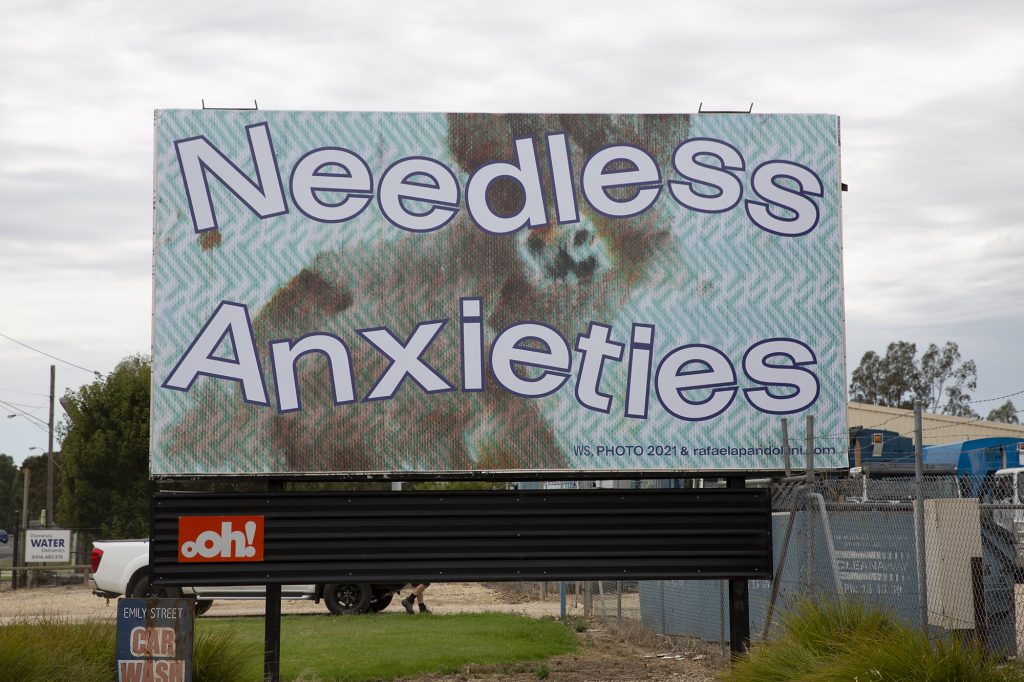
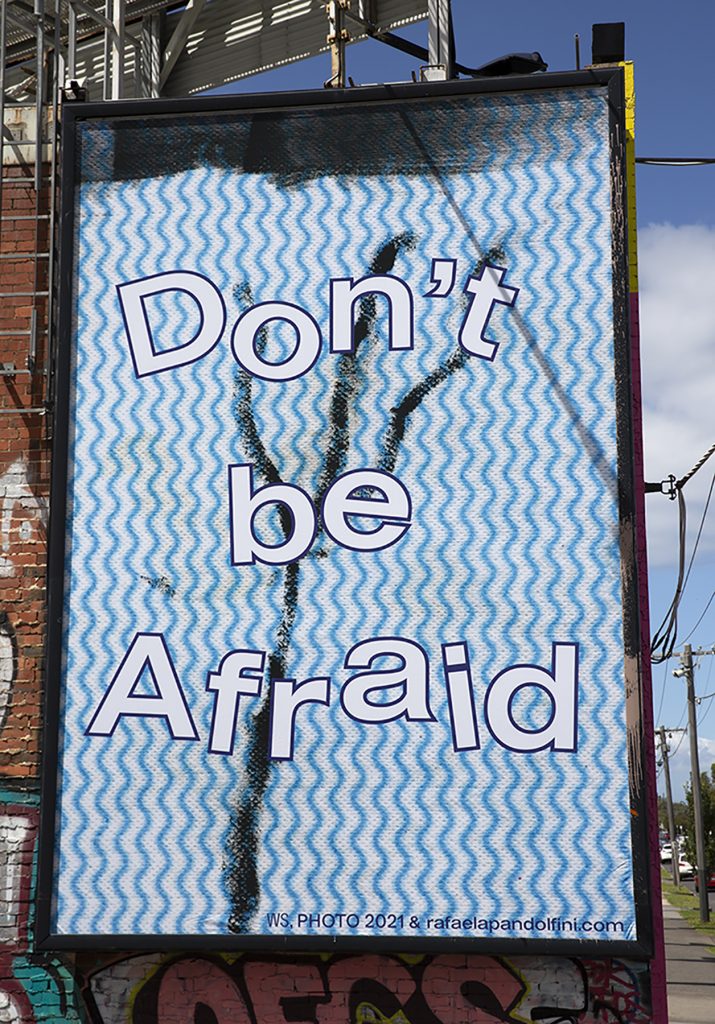
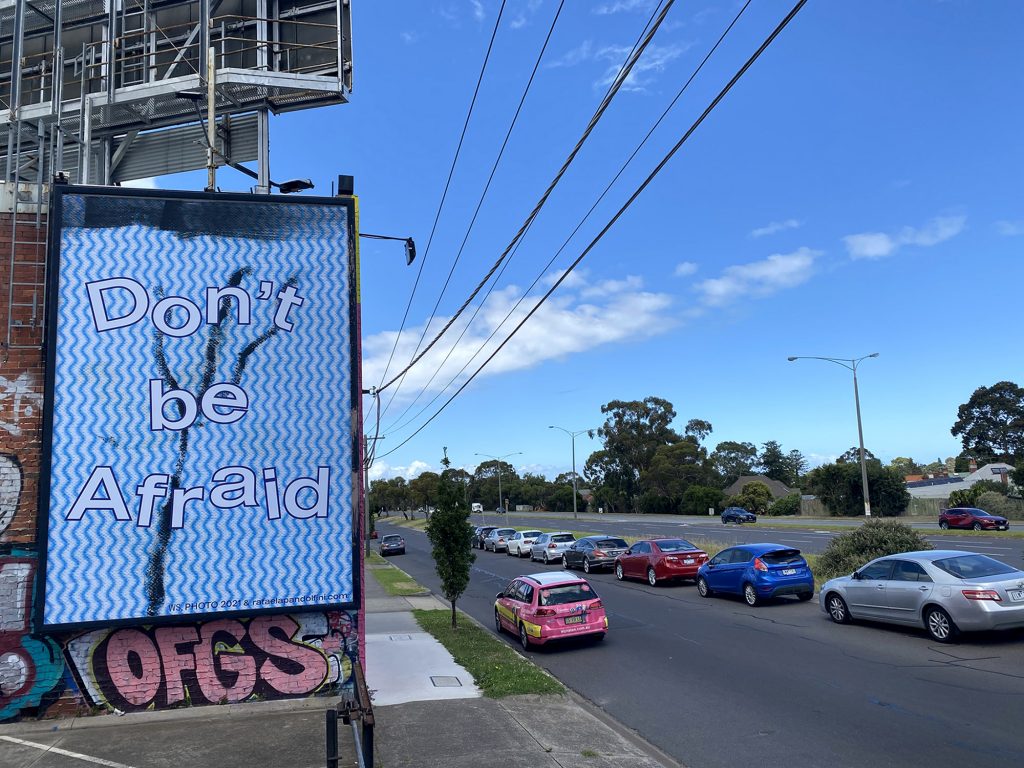
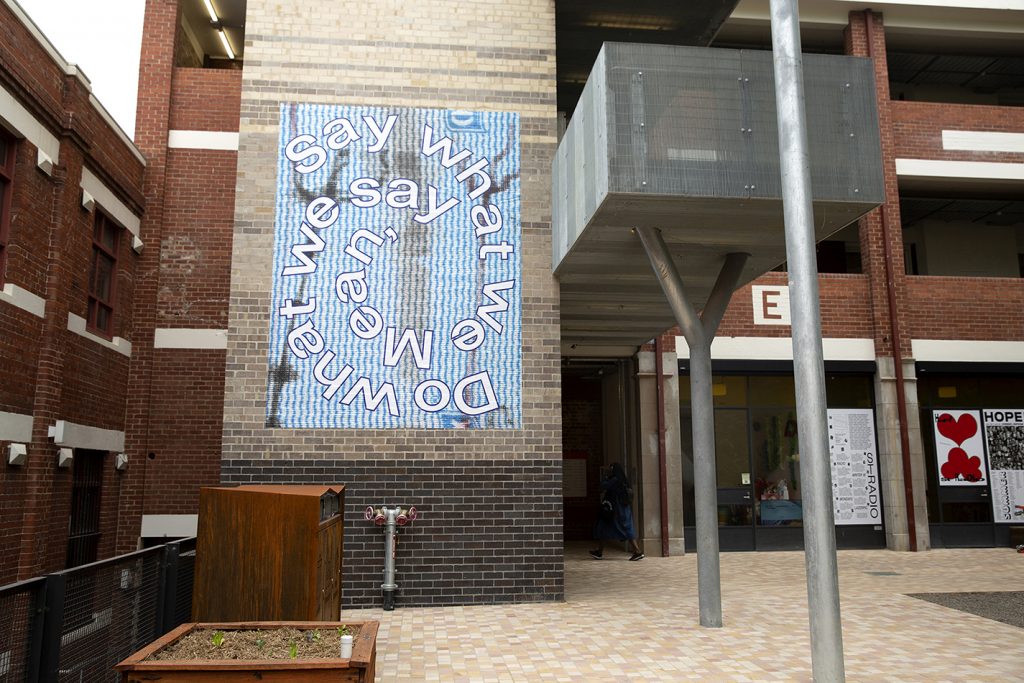
CAP public area, Collingwood
Painting: Rozsa Erica
Graphic: Robert Milne
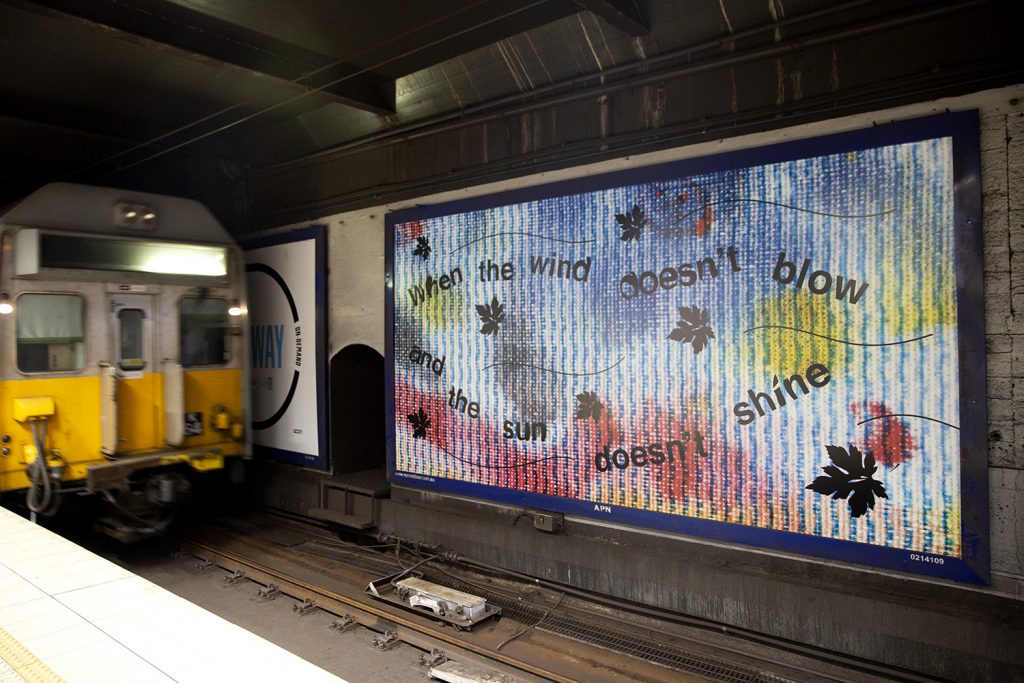
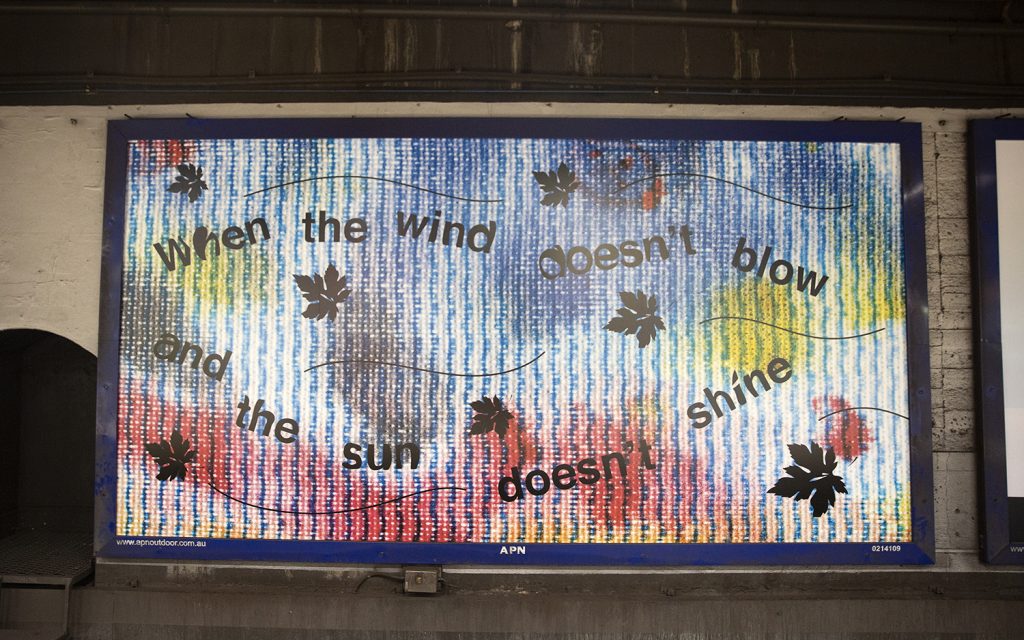
From my infant years I have had the privilege of having frequent holidays to Rosedale, on the south east coast of Australia. It's a very special place for me. On new years eve 2019 I had to get up at 4am to catch a Rixons bus back to Canberra and head back for a NYE "club party". When i woke I was greeted by a msg from an unknown number advising to evacuate immediately as a fire was heading towards Rosedale. After some general stress we headed for Batemans Bay evacuation centre. The severity of the situation became apparent as the sky turned completely black with a red hue. At the evacuation centre I bumped into my good friend Sam Miers who is a Batemans Bay local. Ironically Sam is known for his creative and vibey NYE parties that he puts on in exquisite spots near the Bay, this year there was no party. His mother runs the local Motel and out of amazing kindness put us up for the night. The apocalypse was truly here and that night I went to sleep with a mask on sleeping at the feet of my parents.
You couldn't see more than a few meters in front, and by then smoke was the new oxygen. Batemans Bay turned into a hell hole with zombies walking around. Fights were breaking out in the line and tension was high. We found out on the grape vine that Rosedale had been spanked by the fires. In the afternoon me and my Dad went back to Rosedale. The devastation was evident as we turned the corner to see if our house was still standing. By some miracle it was, however all the fences and garden were burnt and still smouldering. It turned out that our neighbour never made it out and stayed to fight, she ended up on the beach for some time barely being able to breath. When the wind direction changed (a miracle) she and a few others ran back up to the houses to put out the spot fires She spent an hour putting out the fire at our place and saved the house. when me and my dad returned a day later there was a large effort by a few to stop any further flare ups. The street bared witness to burnt cars and houses that weren't so lucky. Aluminium boat tinnies had melted down to the size of a pizza tray.
This mix contains all original material warts and all compiled from various musical "jams" I have had at the Rosedale house from 2000 to 2020 plus some input from Sam Miers and Daniel Oakman two very important batemans bay renegades who have taught me a lot about the local area, from its incredible Aboriginal roots to local juicy gossip. I've been lucky enough to share the family house with very close friends who are featured on these recordings. Moods drift from serenity, playful, intimate, messy, testosterone fuelled, darkness and silly jams. The field recordings are taken from recordings that Sam Miers made of various local areas that were regenerating after the fires last year and snippets that I recorded in the evacuation centre as the fire approached us. I'm yet to return with all this covid biz but looking fwd, nature is the true boss.Words and photos Samuel Karmel
The Myths and Facts works emerged from the brutality of last summer's smoke and fire and the political language that sidestepped all responsibility for country and our unfolding environmental emergency. I was invited to join others in soundtracking the 878km drive.
My selection sits in my inevitable mood of every long drive across this land a slow dance of sustenance and heartbreak, strength and sprouting energy. Ilkari Maru, Cluster, Willie Nelson, The Tableland Drifters, Clara Ward...When to play it? Let's say a couple of hours before last light which by the Hume is normally on Taungurong country as you're passing Euroa / Seymour or heading the other way, as you emerge through the southern highlands onto Eora country. Or just on any drive.
Jimmy Sing
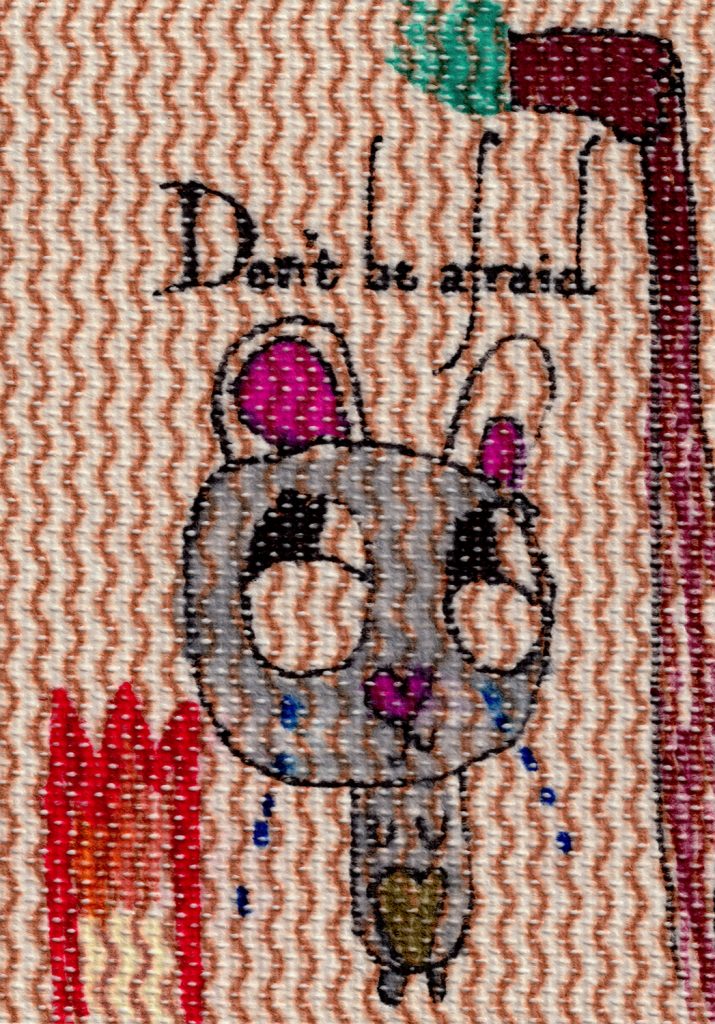
Typesetting Mitch Brown
Tracing and placement Rafaela Pandolfini
Garraywarra HUME Mix for Myths & Facts
Looking forward to being able to do the Hume drive some time and listen along to all these. If it is possible for mine to play on a leg in Wiradjuri country that would be deadly.
It's bloody hot today! I'm about to go for a swim. Hope you are doing something lovely, also hope that all is well in your world!Jazz Money
Jeanette Little
